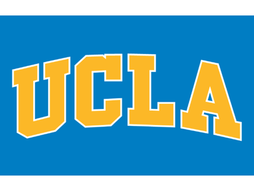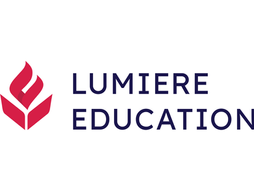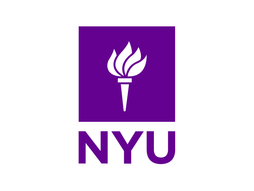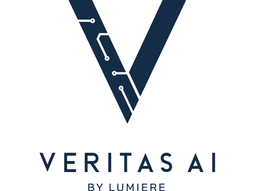8 Math Project Ideas for High School Students
If you’re looking to build a new skill or explore a subject you’re interested in, a personal project can be a great way to dive deeper into the field! A well-researched and executed project can add significant value to your student profile, showcasing aptitude, self-motivation, a strong work ethic, and sustained interest in a subject—traits highly valued by college admissions boards.
For high school students interested in mathematics, we’ve compiled a list of 8 project ideas to help get you started:
1. Modeling the spread of a disease
Since you’ve had first-hand experience living through the COVID-19 pandemic, you can dive into this project to create a mathematical model that simulates the spread of a disease (like SARS, COVID-19, or another disease that has publicly available data). You will learn more about compartmental models in epidemiology through this project. In particular, you can use the SIR (Suspected-Infected-Removed) model to calculate the number of suspected infected cases at a particular point of time.
Level of knowledge needed: Intermediate to advanced
Skills required: Data analysis, calculus, programming (optional), strong research skills
Potential drawbacks: You may find this project difficult if you are unfamiliar with large, public data sets and do not know how to navigate them. You may need a mentor or a teacher to help guide you
2. Exploring the Golden Ratio in art and architecture
Simply put, the Golden Ratio exists when a line is divided unequally into a longer part (a) and a smaller part (b). The sum (a+b) equals the smaller part dividing the longer part (a/b), and they both equal 1.618. This principle is widely used in art, design, and architecture. You can examine famous artworks, buildings, and other objects to see how closely they align with this rule. Discuss the history of the ratio, how it has been depicted in art over time, and its significance today.
Level of knowledge needed: Basic to intermediate
Skills required: Good knowledge of geometry and algebra, strong research and observational skills, eye for detail
Potential drawbacks: You may need to physically visit some museums and sites to inspect paintings and architecture, which may limit the amount of artwork you can examine
3. Investigate the mathematics of cryptography
Read up on the different cryptographic techniques used today (like RSA encryption) and the mathematical principles used to secure data. You can learn about algorithms and use this knowledge to encrypt and decrypt messages. You can extend this project to include an element of programming: use JavaScript and Python to create your own encryption model, balancing efficiency and security.
Level of knowledge needed: Intermediate
Skills required: Strong logical and analytical thinking skills will be useful. Good understanding of algebra, number theory, and working with prime numbers. Some programming skills will be helpful (depending on how involved your project is)
Potential drawbacks: Cryptography can be complex and overwhelming, so you’ll need a lot of persistence and patience!
4. Use graph theory to make traffic flow better
You can narrow down on a local neighborhood or other area and use graph theory principles to make traffic flow better and public transport more efficient. Concepts you can use include multinodal graphs representing traffic signal networks, the fuzzy logic algorithm to determine how long a light stays green, and compatibility graphs to organize streets. You can use this project to identify bottlenecks, suggest alternate routes, and improve traffic light timing.
Level of knowledge needed: Intermediate to advanced
Skills required: Prior knowledge of graph theory, data analysis
Potential drawbacks: Finding real-world data can be difficult. You may need a mentor to guide you with this project
5. Exploring mathematics in music
You can explore the relationship between mathematics and the frequencies of notes, rhythm patterns, and harmonics. This project will teach you about time signatures, how the number of beats creates rhythms, and many other concepts. You can take advanced concepts like the Fibonacci series and see how they influence the structure of music compositions. We recommend selecting a classical music composition and analyzing the mathematical structures present (for example: Wolfgang Amadeus Mozart’s “Eine kleine Nachtmusik”).
Level of knowledge needed: Basic to intermediate
Skills required: Prior knowledge of sound waves, trigonometry, and algebra
Potential drawbacks: Depending on how detailed your project is, you may need access to sound analysis software. It’ll be helpful if you already have a music background
6 . Explore game theory and the prisoner’s dilemma
Learn about the basic principles of game theory (strategic behavior, interdependency, optimal outcomes, and more). You will also understand the mathematical concepts in game theory and have a stronger understanding of probability, matrices, and linear algebra. Analyze games like the Prisoner’s Dilemma, or even create your own! You can investigate how game theory principles are used in decision-making across several disciplines.
Level of knowledge needed: Intermediate
Skills required: Strategic and logical thinking and prior knowledge of probability will be helpful
Potential drawbacks: Game theory can become complex when you have multiple actors with several decision options. You will need a strong mathematical base to move forward
7. Card shuffling and randomness
Explore shuffling a pack of cards, including the number of shuffles you need to get a truly random pack. Learn about the different shuffling techniques used in different games. Shuffling principles to create a randomized deck can be used to refine sorting techniques when distributing files in a database. Biologists have used the mixing time of shuffles to study the genetic evolution of genes, and others have used shuffling principles to organize traffic flow. You could write a report on the different applications of card shuffling, or even suggest a few yourself!
Level of knowledge needed: Intermediate
Skills required: Basic knowledge of probability, group theory, and combinatorics
Potential drawbacks: High-level shuffling techniques can be complicated to understand at a high school level and would require a deep understanding of mathematical concepts
8. Monte Carlo simulation to estimate Pi
You can use this project to explore statistical concepts like probability and geometry, and use programming. The Monte Carlo simulation is used to predict outcomes of uncertain events and is used to predict price rises, stock market valuations, and budgets. Here, we can estimate the value of Pi by simulating random points being thrown into a square circumscribed within a quarter circle. The ratio of points in the quarter circle to the total number of points can help estimate Pi.
Level of knowledge needed: Intermediate to advanced
Skills required: Prior knowledge of statistical concepts is required. Experience with programming is helpful if you’d like to explore this theme in-depth
Potential drawbacks: This concept can be complicated, and you would need a teacher to explain it to you
One other option—the Lumiere Research Scholar Program
If you’re interested in pursuing independent research in math, you could also consider applying to one of the Lumiere Research Scholar Programs, selective online high school programs for students founded with researchers at Harvard and Oxford. Last year, we had over 4000 students apply for 500 spots in the program! You can find the application form here.
Also check out the Lumiere Research Inclusion Foundation, a non-profit research program for talented, low-income students. Last year, we had 150 students on full need-based financial aid!
Kieran Lobo is a freelance writer from India.









